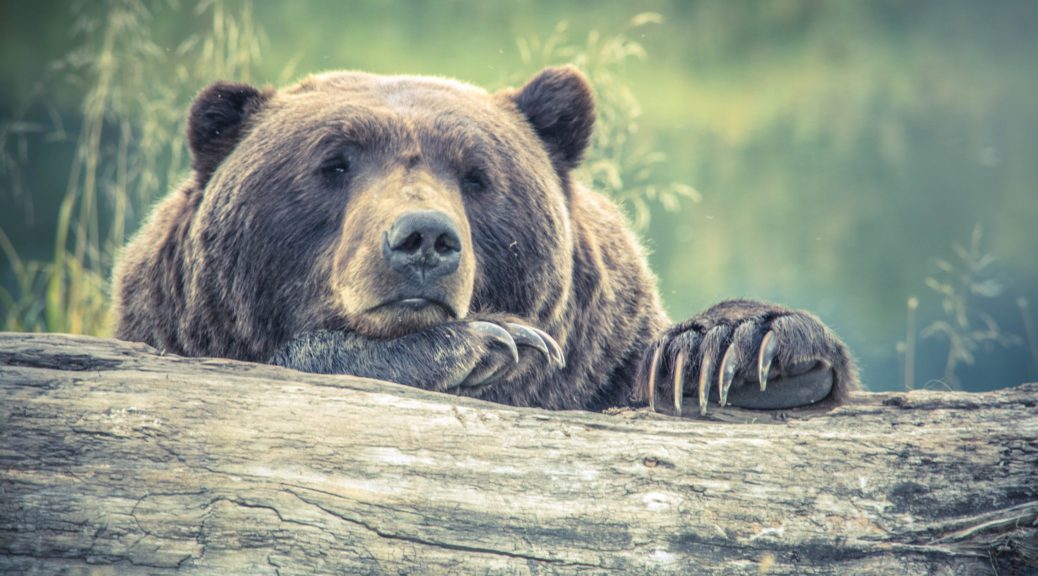
Bear Country Safety – the Truth About Being Bear Aware
Many of the most beautiful and popular backpacking locations are in prime bear country. And if you’ve ever visited anywhere like the Greater Yellowstone Ecosystem or Yosemite National Park you may have heard things such as, “play dead,” “run downhill,” or “make sure to wear bells on your shoes.”
There is so much misinformation about bear country safety that it’s difficult to know what’s fact and what’s fiction. I have heard conflicting advice from two different bear professionals and even seen conflicting things on different informational brochures distributed in National Parks and Forests.
What most people don’t understand is that different bears have different personalities (bearsonalities?) and motivations, and this influences how you should respond during an encounter.
The Best Protection is Prevention
Quick Look:
- Stay in groups
- Make noise
- Watch for bear sign
- Practice proper cooking and food storage techniques
I recently attended a regional employee meeting for the Department of Fish and Game where I work. The bear biologist who works within the Greater Yellowstone Ecosystem (one of the few places grizzly bears are found today) offered an excellent bear safety training.
In the training, he said that the amount of bear attacks on groups of two is drastically lower than on single hikers. The percentage keeps declining until hitting 0% on groups of 5 or more. This illustrates one of the most important bear safety preventative measures. Never hike in bear country alone.
Bears get a bad rap. I have spent time working closely with bears, and, at the risk of sounding cliche, I will say that they are usually more afraid of you than you are of them. It is very important to understand that bears are not out to get you. In fact the majority of the time, bears would rather not be anywhere near you.
If a bear hears you coming, it’s going to leave the area. This is why you should always make noise while hiking in bear country. Some people actually wear bells on their shoes. Personally, I forgo the bells and instead choose to yell things like “hey bear” or my personal favorite, “who-dee-who.” Any phrase works as long as it’s loud. Making noise is a must when traveling around blind turns or if trees and brush are blocking your view.
You should also keep a lookout for signs a bear is in the area. Signs include scat, bark stripping/ claw marks on trees, and tracks.
Another crucial preventative measure when backpacking is proper cooking and food storage practices. In bear country, you must store food (as well as other scented items like toothpaste and lotion) in a bear safe way. This could mean using a bear canister, which is required in some areas or tying it up on a tree.
If you tie food to a tree it should be at least 10 feet above the ground and four feet below the branch and away from the trunk. You should also keep your cooking area and food storage area 100 yards away from your sleeping area. 1
Finally, it is a good idea to carry bear spray with you and keep it in a location on your person that can be accessed quickly the moment it is needed.
Which Bear Is Which?
Quick Look:
- Black bears can be brown and grizzly bears can be black
- Grizzlies are larger, have a shoulder hump, “grizzled” fur, short round ears, and a downward sloping rump
- Black bears are smaller, have no shoulder hump, have longer ears, and have a rump higher than the head
- Grizzly tracks have straight toe pads and a large gap between claws and toes
- Black bear toes are rounded and have a smaller gap between claws and toes
Even if you are practicing excellent prevention strategies, there is always the chance you may still run into a bear. So what then?
In the United States, there are two types of bears, grizzlies and black bears. These bears both exhibit different behaviors so it may be important to identify which bear you are dealing with if you encounter one in the backcountry.
A common misconception (perpetuated by the names of these critters) is that grizzly bears are always brown and black bears are always black. This could not be further from the truth. Black bears can be black, brown, blonde, and in some cases even blue (more of a grayish color) or white. Grizzly bears can be light brown, dark brown, or even very nearly black. Color is not a reliable identification marker.
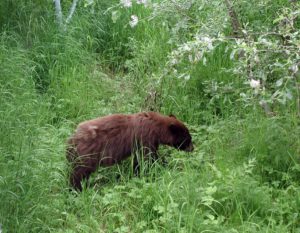
One of the easiest ways to recognize a grizzly bear is by its large shoulder hump behind its head, but this can be less pronounced in younger bears and some large black bears may appear to have a hump. Grizzlies also have short rounded ears, where black bear ears are more elongated.
Grizzly bear fur tends to have a “grizzled” look whereas black bear fur is usually smoother. Grizzlies also have rumps that slope downwards where black bears have rumps that are higher than the head. Grizzly bears are larger than black bears, but there is some size overlap between younger Grizzlies and, larger, older male black bears. Looking out for each of these signs in conjunction with one another can help you correctly identify the bear species.
But beware, if you just look for one of these indicators you may be easily fooled.
You can find some pictures illustrating some of these differences at the end of this post.
You can also tell which bear might be hanging around the area if you spot their tracks. Grizzly tracks have toe pads that go straight across, and a larger gap between toe pads and claws. Black bear tracks will have rounded toes and a smaller gap between toe pads and claw marks.
However, these track features can be a little harder to notice in real life. Take a look at these black bear tracks I spotted in the mud. Can you see the rounded toe pads and the claw marks close to the toes? They’re harder to pick out than the diagram above, but they’re there.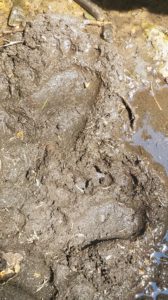
What to do in a bear encounter
If you encounter a bear, and the bear sees you, the first thing you want to do is identify yourself as human. Don’t be crouching behind a bush or otherwise obscured or the bear may think you are prey.
Don’t panic. The bear may charge or just run away. DO NOT RUN. If the bear is staying put, increase your distance backward at a normal pace and ready your bear spray. At this point, you need to decide if the bear is defensive or non-defensive. Understanding this is crucial to understanding how you should react. And, unfortunately, this is what most people do not understand about bear safety.
Defensive Attack
A defensive bear attack is centered around the bear’s desire to protect something. This could be a mother with cubs or defense of an animal carcass. This type of attack usually involves grizzly bears. If the bear is acting defensively, it will have its ears back with its head down.
It is important to stay in a group with your backpacking companions and use your bear spray.
If the bear makes contact you should play dead. Playing dead is the correct action during a defensive attack because the bear only wants to neutralize you as a threat. If you are no longer a threat, the bear feels safe and will walk away. Remain still until the bear leaves the area. If you get up too soon, the bear could return to attack again.
Non-Defensive Attack
Non-defensive encounters happen when a bear is bold and curious. These types of encounters happen between humans and often younger bears or black bears. These bears will have their heads and ears up. They may stand on their hind legs to get a better look at you. This does not necessarily mean they are about to charge.
In this type of encounter, it is extremely important to stand your ground. Backing away will make the bear bolder and trigger it to advance closer to you. Remain calm, use your bear spray and try to scare the bear away.
In this situation, if the bear makes contact you should fight back with everything you have! Go for the eyes, the nose, anything to get the bear to understand that fighting you is not worth it.
Now don’t be afraid to get out there
As you can see, the action you need to take in each of the different bear encounters is almost exactly opposite of the other. This is why there is so much conflicting information and confusion about bear country safety.
I understand that this is a lot of information. However, it is all very necessary in order to travel safely in bear frequented areas. It is helpful to prepare yourself according to the type of bear you may encounter on your backpacking trip and understand which scenario this encounter would most likely lead to. For example, both grizzlies and black bears are found in Montana, but only black bears are found in Northern California.
If nothing else, remember the preventative measures and you will more than likely never need to know how to react in a bear attack.
Finally, I would like to reiterate that bears are not out to get you. They are not hunting humans. In fact, being opportunistic eaters, most of the time bears aren’t hunting anything. Instead, they prefer to eat things that have already been killed by another predator or easy to find treats like berries, nuts, and bugs.
I have personally had the privilege to work closely with bears and have found them to be wonderful, fascinating individuals.
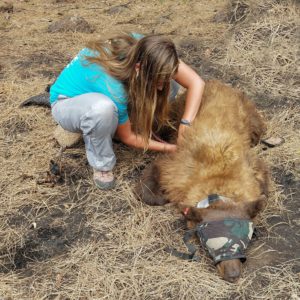
I hope you have learned a lot from this post and use this information to backpack safely. You can 100% have a wonderful and safe adventure in bear country. People do it successfully every day.
If you have any questions, bear stories or any other comments, please leave them below. I would love to hear from you.
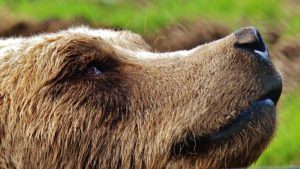
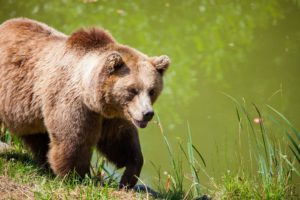
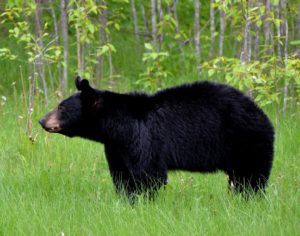
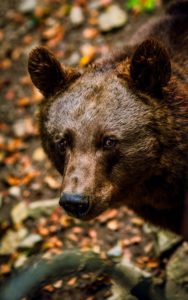
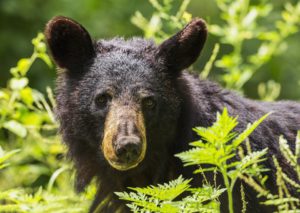
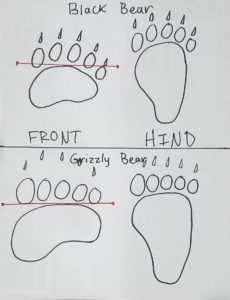
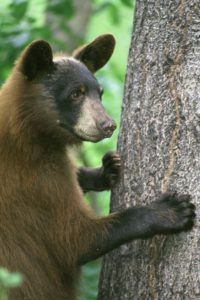
24 thoughts on “Bear Country Safety – the Truth About Being Bear Aware”
I love it very informative, I figured I’d just bring a gun in case but I’d hate to shoot something that doesn’t need to be shot, just there to protect myself. It’s good to know if I’m out with my family making a bunch of noise most likely I don’t have to worry about a bear. Your post is great and I’m glad it’s not full of ads. Even though it’s not full of ads personally I would put three to four more in your post. I want to know where to get the Bells, maybe a bear whistle or a guide for hiking in Bear Country.
Thanks for reading! I’d hate to shoot something that doesn’t need to be shot as well. I hope you continue to have fun and safe outdoor adventures with your family.
Hi Mariah, Thanks for the information. I find it fascinating that in some countries, bear attacks/sitings are a reality. I would love to be able to stand among some of these beautiful creatures, but only the ones with great ‘bearsonalities’! Fortunately for me, my country (New Zealand) does not have any animals to be frightened of when trekking in the mountains.
Kind regards
Andrew
I didn’t know that there were no dangerous animals in New Zealand. How interesting. As a wildlife biologist I love working with animals that could be considered large and dangerous. Even though they are potentially harmful, I’m glad we have them around.
Hi Mariah! thanks for this article:) it is very informative and interesting. It reminded me of a time when i was young, camping with my grandparents and we woke up to a black bear digging through our ice chests, happily eating our food! My grandfather ran toward it yelling and scared it away:0 Even at that young age I knew that was a HORRIBLE idea… haha. anyway, it is so important to know what to do if you encounter a bear, and preventative measures to take to keep yourself out of that situation. so thank you:)
Hi Heather. Glad everything turned out ok with your black bear encounter! 🙂
Very informative article, thank you so much. Thankfully we don’t have dangerous bears in Australia, only ‘drop bears’ (koalas).
I had no idea that Koalas were referred to as “drop bears.” Where did that name come from?
Awesome post there Mariah – Will keep it in mind when I next come to Canada or America. We dont have anything big or dangerous here in New Zealand – so bush hiking is a pleasure. I found your article really interesting . Thank you
Paula
Thanks for reading Paula. Although the wildlife here comes with dangers it is surely majestic and an amazing experience when you are able to observe them safely.
This is an awesome information. I have learned a lot from your post. My husband and I often go to the national park in the summertime. We have never even thought about bears. Thank you for this post. I really enjoyed reading and also the pictures are really nice too.
Thanks for reading! Remember that there are not bears in every national park. The main areas where bears can become an issue are places like Yellowstone and surrounding areas, or Yosemite National Park.
Great post! Ever since I saw the movie The Revenant , seeing bears has a whole new meaning.
Where I used to live (in Canada), you could find bears all over the place. They pop out of the woods and run across the road, the show up in peoples yards to eat from their fruit trees, and my brothers had a bear try to get to all of their food when they were camping in a government camp ground. They did have it strung up in a tree and that bear was very determined to get to it so they had to abandon the campsite.
That does not happen so much where I am now, because it is like semi-arid desert-like conditions and you can see stuff coming for miles.
If you are just hiking around – like a day hike locally, is it a good idea to keep a conversation going with your fellow hikers…just because? Or should you periodically be really loud? Should I be carrying bear spray anyway??
Sounds like you are pretty experienced with bears.
Great questions. If you are in known bear country it is a good idea to keep up a conversation or make normal noise, the noise from a decent sized group walking should be sufficient. Bears have an excellent sense of hearing. I would probably suggest shouting periodically if you are surrounded by thick brush or have seen some bear sign in the area.
You really only need bear spray if you are in an area with frequent bear encounters. For example, I lived in southern Utah where there are black bears but you rarely see them so I never carried bear spray. If I were to go hiking in the backcountry of Grand Teton National Park alone or with just one other person I would most likely want to be carrying it. Better to have it and not need it than the other way around. And if you needed to, you could use it on other animals too, like a charging moose.
Hey Mariah,
Truly great info. Like you said, I do believe that bears are more afraid of us than we are of them. I also believe they are faster and hungrier than us…ha! Seriously, these tips are a MUST if you are heading out on the trail. What kind of work did you do with these magnificent animals?
Thanks for reading!
It’s true. Bears are definitely faster and probably hungrier than us. Luckily they’re lazy and they’d much rather find some easy food than try to eat you.
I have worked as an animal keeper in a free-roaming wildlife park. And I have also participated in some wild bear captures to collect data on wild populations and fit them with radio-tracking collars. That’s me in the picture at the end of the post, taking the pulse of an unconscious female bear.
Important subject.
I came across a big black bear that was brown in my Colorado Springs west side neighborhood one time. The bear came very close to me. I stood my ground and it just veered off and walked on. I didn’t have bear spray or make any noise, but I think I will start carrying bear spray from now on.
Very well done article, thank you.
Oh no! I hope it wasn’t a problem bear that likes to frequent human neighborhoods and get into trash and things. I’m glad it didn’t cause you any trouble. It’s a good sign that the bear took off when it saw you.
I have seen a lot of black bears over the years and if I think about it, I’m fairly certain I have seen more brown ones than black ones.
Great article.
It’s always good to know what to do in the event that one encounters a bear.
Thanks for this useful information.
Thanks for reading!
It would be nice to have a visual of the foot prints of the black and grizzly bear; despite, being able to look on the web. It would complete your informative article.
You’re right! I went ahead and drew a quick diagram to illustrate the concept, and added it to the post if you want to take a look. Thanks for the suggestion.
I’m new to “bear country” so really appreciate this article. I feel a lot safer heading out into the wilderness now (with bear repellent handy!). I love your site and look forward to learning more from you. Thanks for sharing your knowledge!
Glad it could help! Follow the prevention guidelines and you can have a safe bear country adventure!